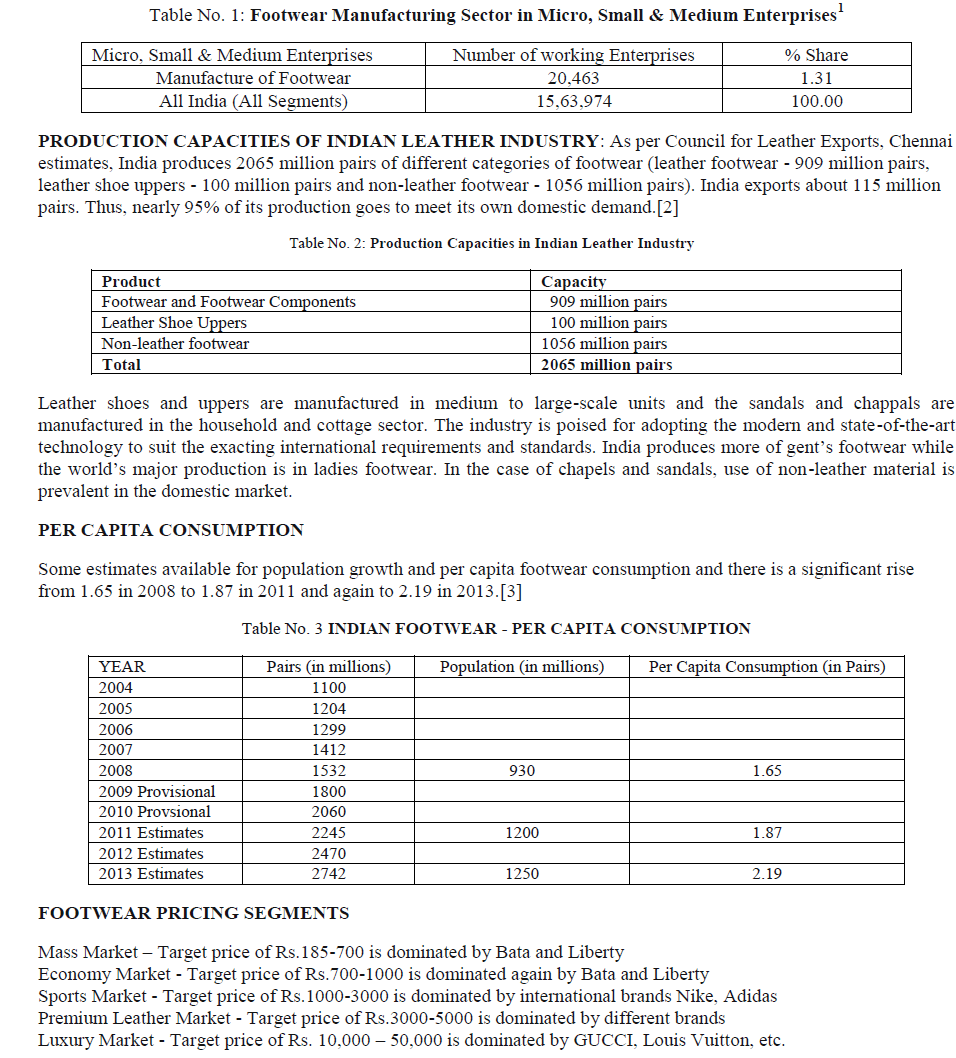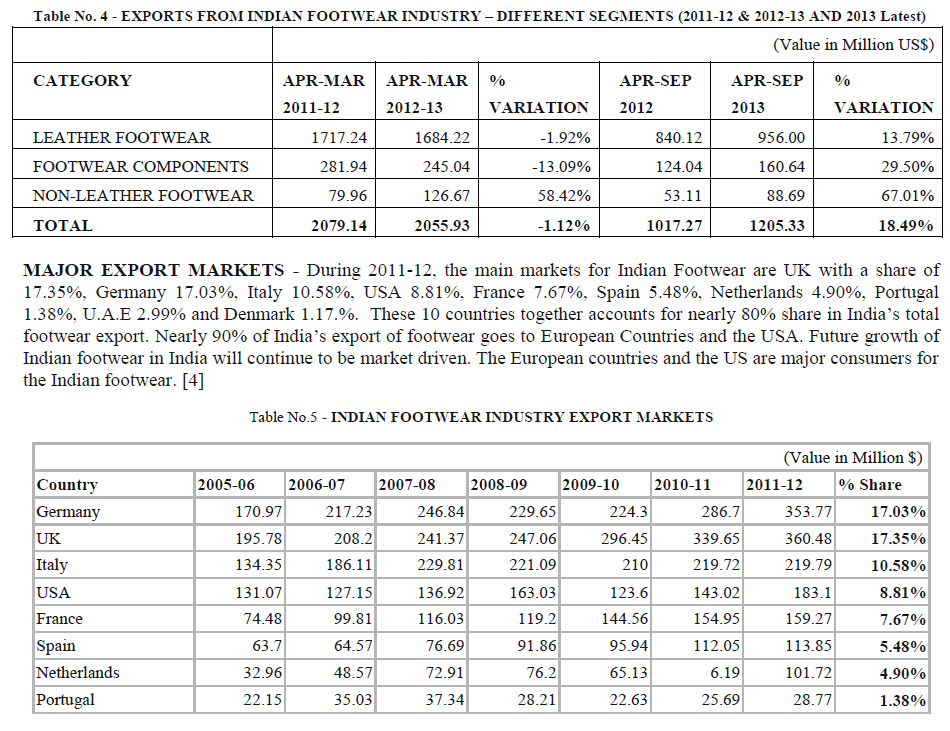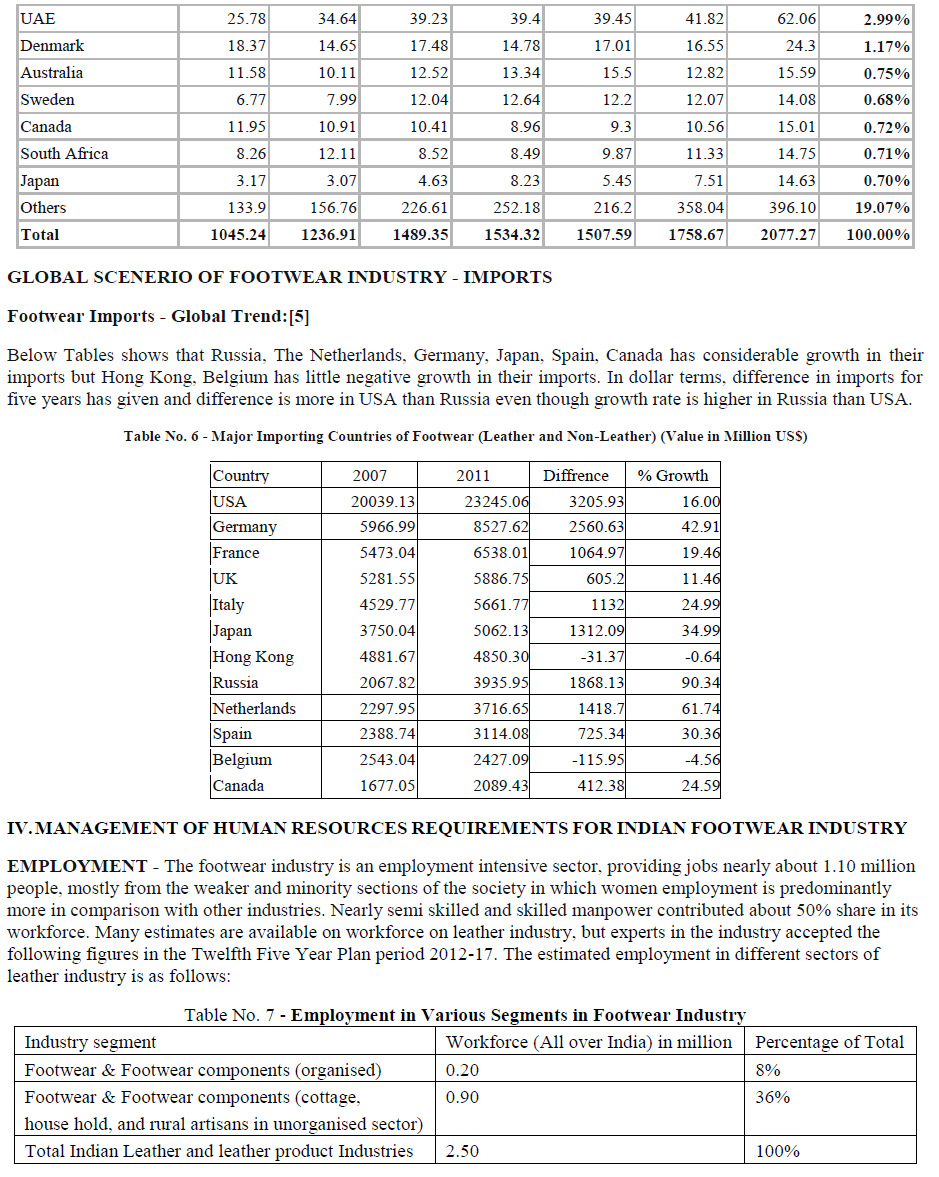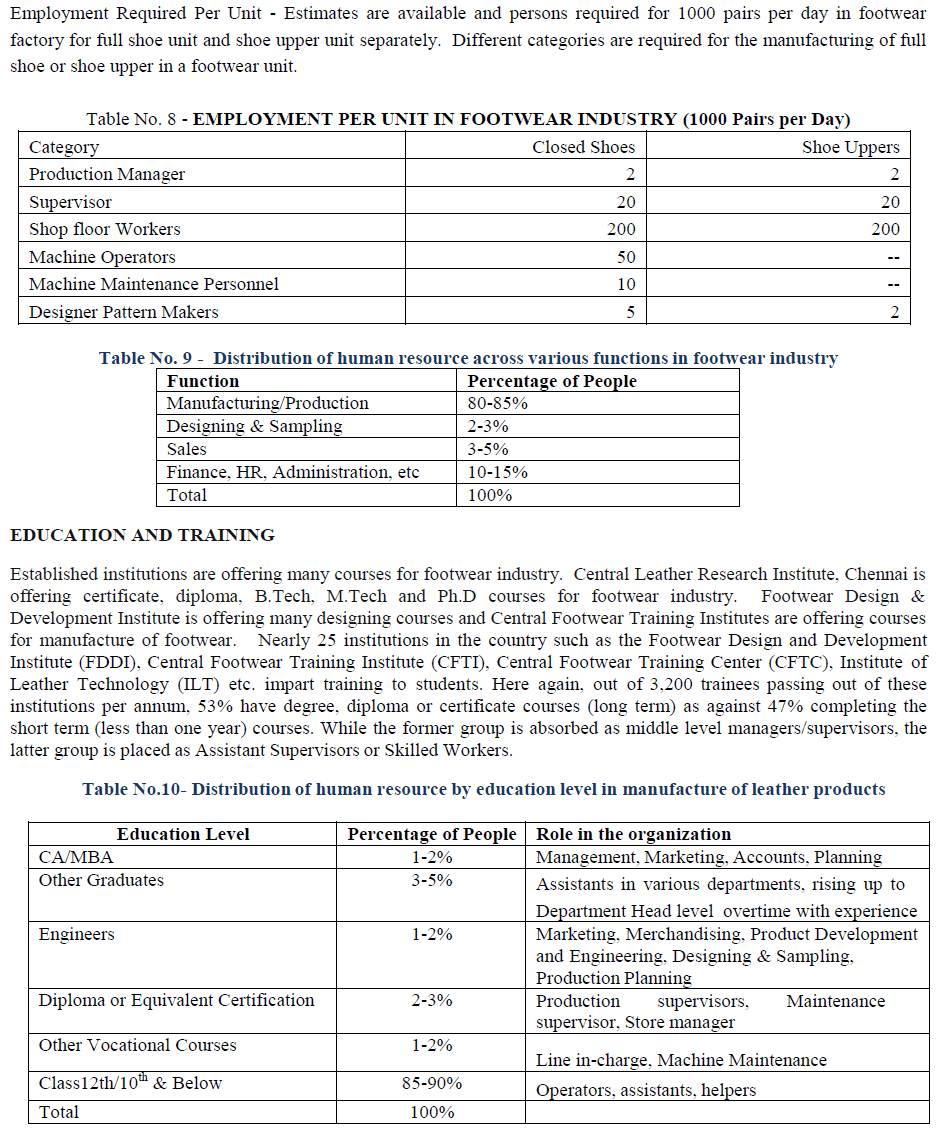ISSN ONLINE(2319-8753)PRINT(2347-6710)
ISSN ONLINE(2319-8753)PRINT(2347-6710)
Sambasiva Rao Vanimireddy1, Subashini K2, Harish K3
|
| Related article at Pubmed, Scholar Google |
Visit for more related articles at International Journal of Innovative Research in Science, Engineering and Technology
Footwear is the product to protect human feet from effects of all biological damages. Many companies use to concentrate different segment like men’s-wear, women’s-wear and children’s-wear separately. Footwear industry has been giving considerable amount of employment to the nation especially weaker sections and minority sections of society in India. Population growth, exports, domestic markets are the factors of expansion of footwear industry and creation of employment opportunities in this sector. This case study reveals the production capacities, structure of industry, exports growth, global imports, per capita consumption and estimates of Human Resources future requirements in footwear industry in India.
Keywords |
| Indian Footwear Industry, HRD in Indian Footwear Industry, HRD for footwear, Footwear Industry, Shoe Industry, Per Capita Consumption of footwear in India, Production Capacities in Footwear Industry |
INTRODUCTION |
| Footwear is the product to protect human feet from effects of all biological damages. Footwear industry is age old traditional industry in India and it has been changed structurally into different segments like casual-wears, dress-wears and sportswear. New segment is emerging for medical purposes as medical-wear like diabetic footwear. Many companies use to concentrate different segment like men’s-wear, women’s-wear and children’s-wear separately. Footwear industry has been giving considerable amount of employment to the nation especially weaker sections and minority sections of society in India. Population growth, exports, domestic markets are the factors of expansion of footwear industry and creation of employment opportunities in this sector. This case study reveals the production capacities, structure of industry, exports growth, global imports, per capita consumption and estimates of future requirements of human resources in footwear industry in India. |
CONCENTRATION OF FOOTWEAR INDUSTRY IN INDIA: |
| The major production of footwear manufacturing concentrated in these centers. |
| ïÃâ÷ Tamil Nadu - Chennai, Ambur, Ranipet, Vaniyambadi, Trichy, Dindigul |
| ïÃâ÷ Maharashta - Mumbai |
| ïÃâ÷ West Bengal - Kolkata |
| ïÃâ÷ Uttar Pradesh - Kanpur, Agra & Noida |
| ïÃâ÷ Punjab –Jallandhar, Ludhiana |
| ïÃâ÷ Karnataka - Bangalore |
| ïÃâ÷ Andhra Pradesh - Hyderabad |
| ïÃâ÷ Haryana - Ambala, Gurgaon, Panchkula and Karnal |
| ïÃâ÷ Delhi and Surroundings |
MICRO, SMALL & MEDIUM ENTERPRISES IN INDIAN FOOTWEAR SECTOR |
| According to Micro, Small & Medium Enterprises, Government of India estimates that there are 20463 units registered as working enterprises, with employment of 97,741 people, with the networth of Rs. 3993.99 crores in micro, small & medium enterprises in India. These units are having Rs.737.17 crores in Plant and Machinery investment and Rs.2324,94 crores in fixed assets and Gross output of Rs.6008.77 crores. All these units are manufacturing all kinds of footwear like leather, non-leather and other types of footwear. These units had the 1.31 percentage in the total Indian units of 1563974 (100%) in micro, small & medium enterprises in India.[1] |
 |
II PROBLEM STATEMENT |
| Indian footwear industry is providing employment opportunities to India. Basically this industry is labour intensive since it is regular consumable item for everybody. Based on the present employment, domestic markets, export growth, there is a need to look into this industry for creation of more employment opportunities to the nation. Industry, Government, Educational Institutions, Industry Associations would look into further investments in the industry and also HRD requirements for future years. Thus Estimates of HRD are required to give an idea for overall development of Industry. |
III RESEARCH METHODOLOGY |
| This study is in terms of purpose is an applied and is type of descriptive- analytical and in terms of data collection is library method and data gathering tools in this study is through website, internet. Analysis on exports growth, global markets, present employment, employment required per unit and further estimates on the growth of exports and domestic markets. |
EXPORTS FROM INDIAN FOOTWEAR INDUSTRY AND GROWTH |
 |
 |
 |
| HRD FUTURE REQUIREMENTS Based on the export target set by the Government of India, structure and expansion of industry and its production capacities, a study has been conducted for human resource and skill requirements in leather and leather goods industry by National Skills Development Corporation, New Delhi (NSDC). NSDC engaged IMaCS (ICRAManagement Consulting Services Limited) to prepare the report, which is based on independent research and analysis done by IMaCS. Projection of HRD requirements for footwear industry has been calculated and given by IMaCS based on 12% CAGR (Compound Annual Growth Rate) for Exports and 8% CAGR for domestic markets. For Export markets, for the year of 2011, estimated figures are given below:[6] |
 |
IV.CONCLUSION |
| Employment opportunities creation is very important to any nation like India. Footwear industry is giving more employment opportunities since the people are spending more on footwear and its quality. More opportunities in exports and domestic markets due to population growth and increase in per capita consumption and purchasing power of middle class people are giving hope to India in footwear sector for future employment creation in India. Being a labour intensive industry, its contribution to employment as well as Indian economy is significant. It has potential to provide employment across all sections of the economy especially weaker sections and minority communities in India. With a focused approach on growing the Industrial and Institutional business, the industry can offer globally renowned industrial footwear products. Quality consciousness, research & development, abundance of raw material, export potential and low cost are some of the distinct features of the Indian Footwear Industry. However, to maintain the growth trajectory, there is need of a purposeful review of programmes and policies of human resources development to rejuvenate it. |
ACKNOWLEDGEMENTS |
| Authors thank the Dr AB Mandal, Director, CSIR-Central Leather Research Institute, Adyar, Chennai and Dr Martin, Dean – Martins Academy, Bangalore for support and encouragement |
References |
|